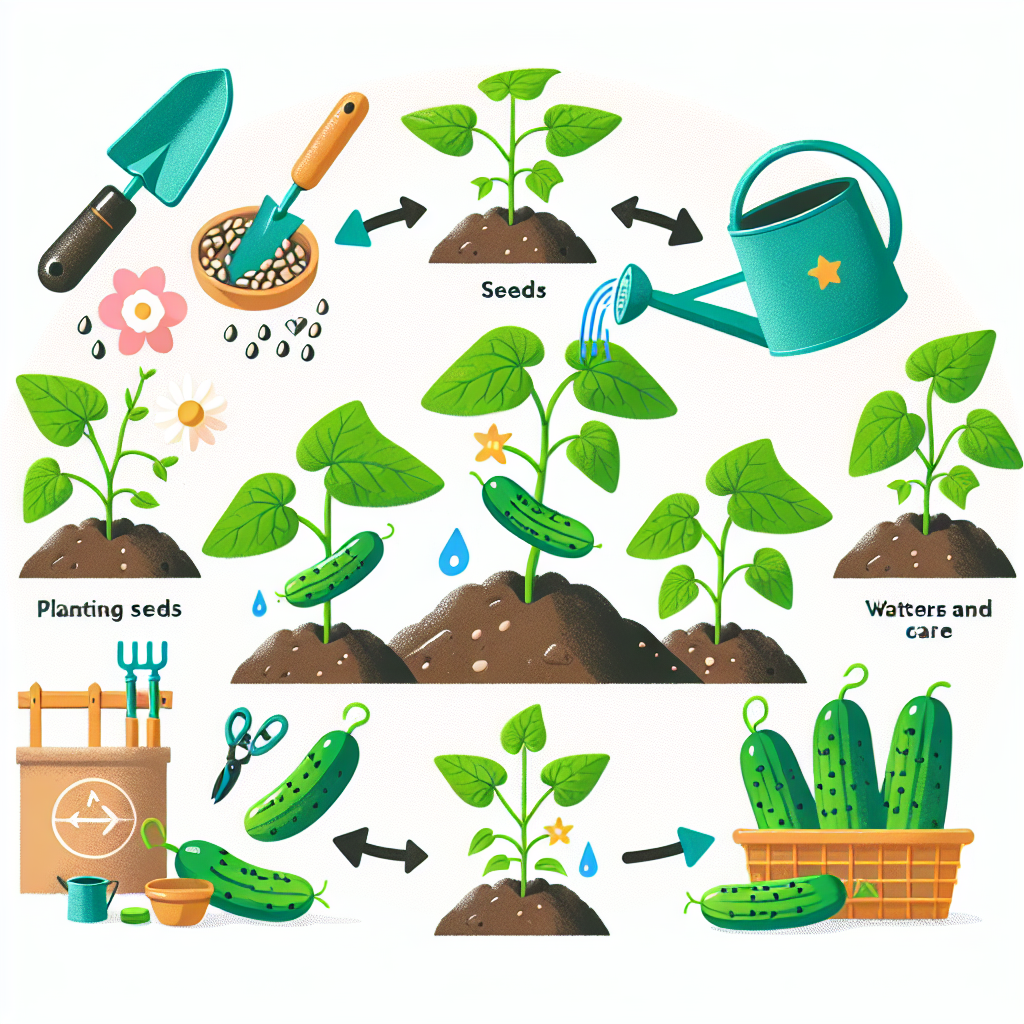
How do you grow mini cucumbers
How to Grow Mini Cucumbers: A Comprehensive Guide
Growing your own vegetables can be incredibly rewarding, and among the many garden delights are mini cucumbers. These small, crisp, and tasty cucumbers are perfect for snacking, salads, and pickling. If you've ever wondered, how do you grow mini cucumbers effectively, you've come to the right place! In this guide, we'll explore the essentials of cultivating these bite-sized vegetables right in your backyard or on your balcony.
Understanding Mini Cucumbers
Before diving into the growing process, it's essential to understand what mini cucumbers are and how they differ from traditional cucumbers. Mini cucumbers, also known as pickling cucumbers, are usually about 3 to 6 inches long. They are crisp, flavorful, and have a thinner skin, making them perfect for various culinary uses.
Choosing the Right Variety
There are several varieties of mini cucumbers available, each with its own unique flavor and texture. Here are some popular options:
- Arabella: A disease-resistant variety with a high yield.
- Salt and Pepper: Known for its flavorful crunch and attractive skin.
- Little Leaf: This variety is perfect for container gardening.
Choosing a variety that suits your gardening situation and taste preferences can significantly impact your yield and enjoyment of the crop.
Site Selection and Soil Preparation
Mini cucumbers thrive in warm temperatures and full sun. To create the ideal environment, consider the following:
- Choose a spot that receives at least 6-8 hours of direct sunlight daily.
- The soil should be well-drained and rich in organic matter.
- Consider adding compost or aged manure to enhance soil fertility.
Testing your soil pH is also beneficial. Mini cucumbers prefer a soil pH between 6.0 and 6.8. You can use a home testing kit or send a sample to your local agricultural extension office for analysis.
Planting Mini Cucumbers
When considering how do you grow mini cucumbers, planting timing is crucial. You can either start seeds indoors or direct sow them outdoors:
Starting Seeds Indoors
If you live in a colder climate, start seeds indoors about 4-6 weeks before the last frost date. Follow these steps:
- Use seed trays filled with seed-starting mix.
- Plant seeds about 1 inch deep.
- Keep the soil consistently moist and provide warmth (around 70°F-85°F).
- Once seedlings have two true leaves, transplant them outdoors after the frost has passed.
Direct Sowing Outdoors
If your growing season is longer, you can directly sow seeds into the garden:
- Wait until the soil temperature reaches at least 65°F.
- Sow seeds about 1 inch deep and 12 inches apart in prepared soil.
- Cover lightly with soil and water gently.
Caring for Mini Cucumbers
Once you've planted your mini cucumber seeds or seedlings, it's time for care and maintenance. This involves regular watering, feeding, and pest management:
Watering
Mini cucumbers require consistent moisture, especially during flowering and fruiting stages. Follow these guidelines for effective watering:
- Water deeply about 1-2 inches per week.
- Use a soaker hose or drip irrigation to prevent wetting the leaves, which can lead to fungal diseases.
Fertilizing
To promote healthy growth, consider using these fertilization methods:
- Apply a balanced fertilizer every few weeks once plants establish.
- Alternatively, use compost or organic fertilizers for a slow nutrient release.
Pest Management
Keeping pests at bay is vital for healthy mini cucumber plants. Common pests include:
- Cucumber beetles
- Aphids
- Spider mites
Implementing these management techniques can help:
- Use row covers to protect young plants.
- Encourage beneficial insects like ladybugs.
- Inspect plants regularly and remove any pests by hand.
Harvesting Mini Cucumbers
Knowing when to harvest is crucial for enjoying the best flavors from your mini cucumbers. Here are some tips:
- Harvest when cucumbers are about 3-6 inches long.
- Inspect daily, as they can grow quickly.
- Use scissors or a knife to cut fruits from the vine to avoid damaging the plant.
Storing Your Mini Cucumbers
Once harvested, proper storage can significantly extend the freshness of your mini cucumbers. Here’s how:
- Store in the refrigerator, preferably in the vegetable crisper.
- Keep them unwashed until you're ready to use them.
- Use within a week for the best taste and texture.
Common Problems and Solutions
Cultivating mini cucumbers is often straightforward, but problems may arise. Here are some common issues and their solutions:
| Problem | Symptoms | Solution |
|---|---|---|
| Powdery Mildew | White powdery spots on leaves | Improve air circulation and apply fungicidal sprays. |
| Blossom End Rot | Sunken dark spots on the bottom of fruit | Ensure consistent watering and calcium levels. |
| Stunted Growth | Small and yellowing leaves | Check for root rot or nutrient deficiency. |
Conclusion
Growing mini cucumbers is a delightful gardening project that can reward you with plenty of fresh produce throughout the season. By following the steps outlined in this guide, you can cultivate healthy, delicious mini cucumbers that will enhance your meals. Remember to pay attention to the how do you grow mini cucumbers questions, from planting to harvesting, and take the time to care for your plants. Happy gardening!
By Guest, Published on August 5th, 2024